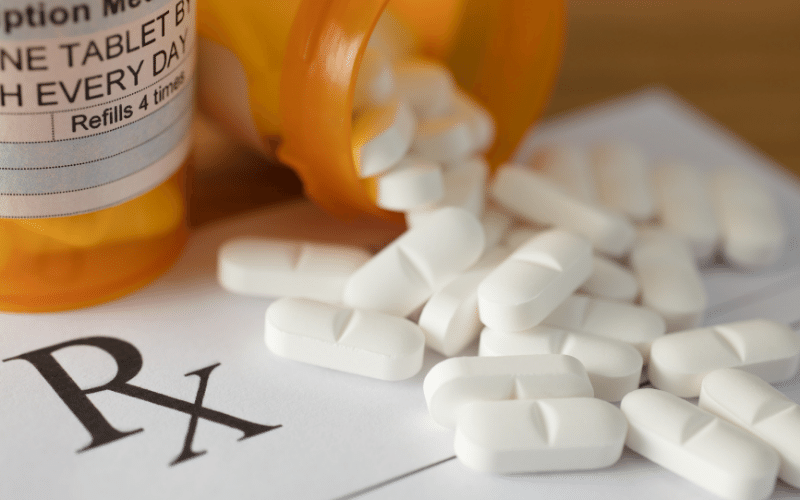Recovery is a challenging journey. Statistics show that 40% to 60% of people in recovery face at least one relapse. This reality shows why spotting early warning signs can make the difference between staying in recovery and having a setback.
To be able to take responsibility for your recovery, you need to be able to spot the symptoms of relapse. Your support network also plays a key role in helping to point out red flags. Warning signs usually start small. They begin with subtle emotional changes that grow into noticeable behavioral changes. Identifying these signals allows you to take action before things get worse.
With Lighthouse Recovery Institute, you’ll discover early warning signs, physical symptoms, and ways to build a support system that works. Our relapse warnings guide helps you identify triggers and understand behavior patterns. You’ll also learn strategies to stop a full relapse before it happens.
Understanding the Three Stages of Relapse
A relapse doesn’t just happen out of nowhere – it unfolds gradually through three distinct stages. You can take preventive action by learning to spot these warning signs early.
Emotional Relapse Indicators
Your mind might not be thinking about substances during emotional relapse, but your behaviors and emotions lay the groundwork for future issues. These early warning signs need attention:
- You keep your emotions bottled up
- You pull away from other people
- Your sleep and eating patterns suffer
- You skip your regular support meetings
- You focus on everyone else’s problems except yours
- Your moods swing up and down
Denial plays a big role when you’re in an emotional relapse. The changes in yourself might not be obvious, which makes staying connected with your support system vital. Having candid conversations with your support system can give you more insight into your emotional state and help steer you in the right direction to avoid a relapse.
Mental Relapse Warning Signs
Mental relapse brings an internal struggle. While one part of you wants to stay in recovery, another part starts thinking about using again. Your thoughts drift more toward substance use. Old memories of people and places from your using days pop up.
You might downplay how bad things were before or dream up ways to use “just once.”
Poor self-care eventually leads to this shift from emotional to mental relapse. You start feeling restless and irritable, uncomfortable in your skin, and looking for a way to find immediate relief from those thoughts and emotions.
Physical Relapse Symptoms
The final stage, physical relapse, happens when you use substances. This usually follows a mental relapse period where your resistance has substantially weakened. Research shows this stage breaks down into two parts: the original use (lapse) and the return to uncontrolled use (relapse).
Spotting and dealing with earlier stages helps prevent physical relapse. Experience shows that obsessing over the amount used during a lapse can blind you to what it all means when you use even once. Once you have used substances again, the guilt and shame of the lapse often lead to continued use of substances to avoid dealing with the emotional and mental toll.
Digital Age Warning Signs of Relapse
The digital world can reveal early signs that you might relapse. Recent studies show 79% of Americans use the Internet regularly. Your digital footprint provides vital clues about your recovery journey.
Social Media Behavior Changes
Your social media habits can show what’s happening in your emotional life. Studies indicate that all but one of these social media users develop healthy usage patterns. These patterns are often associated with higher relapse risks. Look out for these signs:
- Posts appearing at odd hours
- Sudden changes in your online friend circle
- More time spent mindlessly scrolling
- Using platforms to avoid negative emotions
- Feeling anxious when you can’t access your accounts
Online Spending Patterns
Your shopping habits online might signal deeper issues. People often shop online to cope with stress or negative feelings. You might start:
Buying things more often without thinking, especially late at night. This happens when you try to fill emotional gaps or deal with anxiety. The risk increases if you hide your purchases from your family or use shopping to manage your stress levels. It follows the same patterns of drug use and can lead back to using substances easily.
Changes in Digital Communication Habits
The way you communicate online can signal early warning signs of relapse. Studies based on technology show how changes in online behavior reflect deeper struggles. Watch out if you:
Stay active online at unusual times, especially late nights or early mornings.
People with problematic online usage are more active at night. Your communication style may also change – you become quiet in group chats or show unusual aggression in online discussions.
Note that these digital warning signs often appear with emotional relapse indicators. Studies reveal online usage jumped 46.8% during isolation periods. This makes monitoring your online behavior even more significant to prevent relapse triggers.
Physical and Behavioral Red Flags of Relapse
Physical changes during recovery can signal potential setbacks. Poor self-care often shows up as one of the earliest warning signs that might lead to relapse.
Changes in Daily Routines
Daily habits reveal clues about your recovery status. You need to pay attention when you drift away from your regular routines. A structured schedule helps you manage stress levels and supports recovery. Look out for these HALT warning signs:
- Hungry
- Angry
- Lonely
- Tired
If you’re hungry, eat and check if your mood improves. Quick to anger? Evaluate the situation—control what you can and let go of what you can’t. If you’re lonely, reach out to your support network, attend a meeting, or call a loved one. If you’re tired and feeling unstable, review your sleep habits—cut back on social media or adjust your schedule to prioritize rest.
Physical Appearance Changes That Signal Relapse
Your physical appearance often signals deeper recovery struggles. Studies show that neglecting personal hygiene and appearance can be the first visible signs of an approaching relapse. You might notice:
Grooming habits start to slip, and you pay less attention to simple hygiene. This starts subtly – you might skip your regular shower or wear unwashed clothes. Research indicates these changes typically come before more serious physical relapse symptoms.
Sleep and Appetite Variations
Changes in your sleep patterns or eating habits need immediate attention. Post-acute withdrawal symptoms include mood swings, variable energy levels, and disturbed sleep.
Your appetite might change substantially – you eat much more or less than usual. Studies show these variations often come with other withdrawal symptoms like anxiety and irritability. Watch out if you stay awake during unusual hours or sleep too much during the day.
These physical signs combine with emotional changes to create what experts call a “relapse syndrome.” Research shows about half of all people experience relapse within three months of detoxification. This makes monitoring these physical warning signs vital.
Creating an Early Warning System for Relapse
A well-laid-out early warning system of relapse will greatly improve your chances of maintaining long-term recovery. Research shows that systematic monitoring of recovery progress helps identify potential risks before they become full relapses.
Building a Relapse Monitoring Framework
A structured monitoring system helps you track your recovery experience effectively. Research shows better treatment outcomes when progress monitoring works correctly. Here are the vital components your framework needs:
- Daily self-assessment check-ins
- Weekly progress tracking
- Monthly recovery goals evaluation
- Regular support network updates
- Trigger identification and documentation
Establishing Communication Channels
Reliable communication channels are vital to your recovery support system. Research proves that multiple ways to reach out during vulnerable moments improve recovery outcomes significantly.
Your communication framework should include immediate response protocols for different situations. Technology makes support resources available 24/7. This allows you to:
- Set up emergency contact protocols
- Establish regular check-in schedules
- Create crisis response plans
- Maintain an ongoing dialog with support groups
Note that monitoring systems work best when tailored to your specific needs. Studies show that recovery monitoring should combine self-report data about stress levels and triggers with objective measurements of health indicators.
Personal awareness, combined with technological tools and strong communication channels, creates a complete early warning system that prevents relapse before it occurs.
Immediate Response Strategies for Relapse Prevention
Quick action at the first sign of relapse can make all the difference between staying in recovery and having a setback. Research shows that getting back into treatment quickly after early relapse signs gives you the best chance for long-term health and recovery.
First 24-hour Action Plan
The first 24 hours are vital once you spot relapse symptoms. Here’s what you need to do right away:
- Stop and assess your current situation
- Contact your primary support person
- Remove yourself from triggering environments
- Attend an emergency support group meeting
- Document your thoughts and triggers
- Connect with your healthcare provider
- Use your pre-planned coping strategies
Emergency Contact Protocols
You need a reliable emergency response system. Research shows that having multiple ways to get help during vulnerable moments improves recovery outcomes significantly. Your emergency protocol should include:
Contact Type | When to Reach Out |
Primary Support | The first sign of triggers |
Healthcare Provider | Severe cravings/symptoms |
Crisis Hotline | Immediate danger |
Treatment Center | Need for intervention |
Patients who reach their healthcare providers within a week of spotting early warning signs get better intervention outcomes.
Professional Intervention Timing to Prevent Relapse
The right time to get professional help is vital to stop a full relapse. The shift between emotional and mental relapse happens naturally when poor self-care continues. Look out for these key moments:
- Your usual coping strategies stop working
- You experience intense cravings
- You notice multiple warning signs at once
- You’ve had any close calls with substance use
Your symptoms’ severity will determine the right level of care and course of action. Note that asking for help isn’t a failure. People who get professional support early in the relapse process have better outcomes. Your healthcare provider can tell if you need more therapy sessions, medication changes, or intensive treatment options.
Relapse Prevention at Lighthouse Recovery
Spotting the early warning signs of relapse can make all the difference in your recovery. Understanding the emotional, mental, and physical stages of relapse gives you the tools to address challenges before they turn into setbacks.
Your daily habits—both online and offline—tell the story of your recovery progress. With structured routines, supportive tools, and a dependable network, you can create a strong defense against relapse.
Taking action at the first sign of trouble is a brave and necessary step. Having an emergency plan in place and reaching out for help can stop a potential relapse in its tracks.
Recovery isn’t meant to be a solo journey. Building meaningful connections with your support network, healthcare providers, and treatment team creates the foundation for long-term success. These relationships guide you through challenges and celebrate your victories.
If you or someone you care about needs support, Lighthouse Recovery Institute is here to help. Contact us today to take the next step in building a healthier, brighter future.









